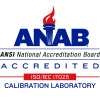 Posted on
Posted on 
Autoclaves play a crucial role in industries ranging from healthcare to pharmaceuticals, ensuring the sterilization of equipment and materials. The validation and verification of autoclave cycles are essential to guarantee efficacy and compliance with regulatory standards. Data loggers have emerged as invaluable tools in this process, enabling accurate monitoring and documentation of key parameters throughout autoclave cycles.
Validation of autoclave cycles involves confirming that specific conditions, such as temperature and pressure, are achieved to achieve sterilization. Data loggers equipped with precision sensors are strategically placed within the autoclave chamber to record these parameters during each cycle. This data is then analyzed to ensure that the conditions required for sterilization have been met consistently.
Verification follows validation and involves periodic checks to ensure that the autoclave continues to operate within specified parameters. Data loggers play a crucial role in this phase by providing ongoing monitoring of autoclave cycles, allowing operators to detect any deviations from the established standards promptly.
MadgeTech’s HiTemp140 is a prime example of a data logger designed specifically for autoclave validation and verification. With its robust construction and high-temperature capabilities, the HiTemp140 can withstand the harsh conditions within autoclave chambers while accurately recording temperature data. Its user-friendly interface and software features make it a valuable asset for ensuring the effectiveness and compliance of autoclave cycles in various industries.
The utilization of data loggers for autoclave cycle monitoring is essential for ensuring the sterilization efficacy and regulatory compliance of critical processes in industries such as healthcare and pharmaceuticals. With their ability to provide accurate and continuous monitoring, data loggers empower operators to validate and verify autoclave cycles with confidence, safeguarding the integrity of sterilization processes and the safety of end-users.










